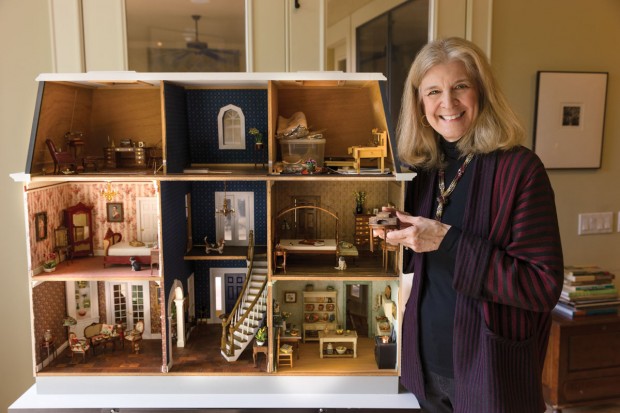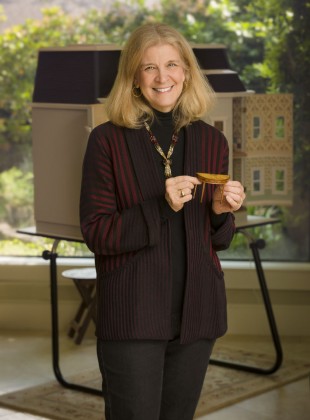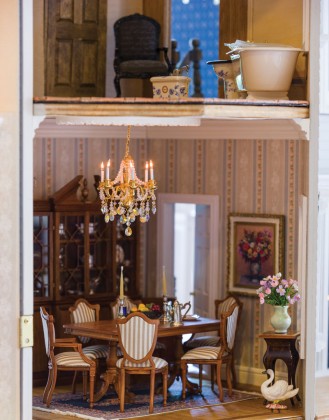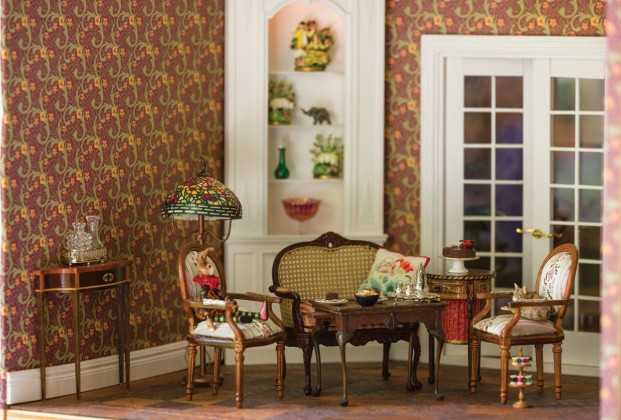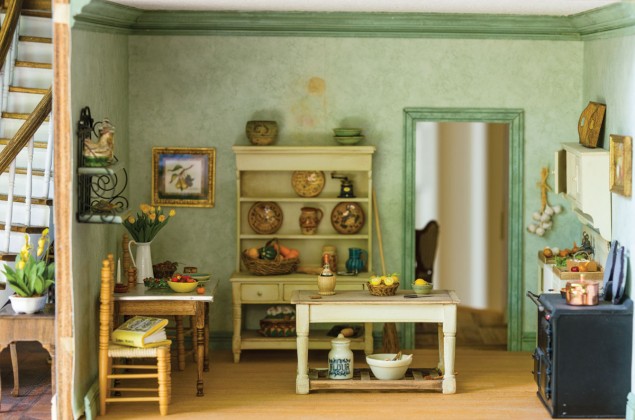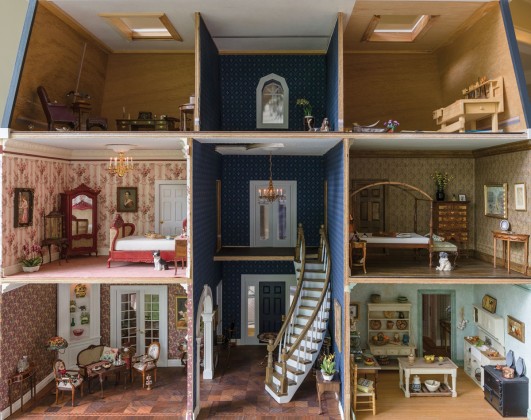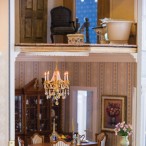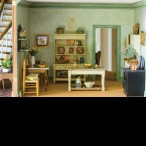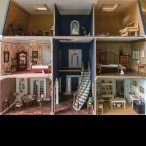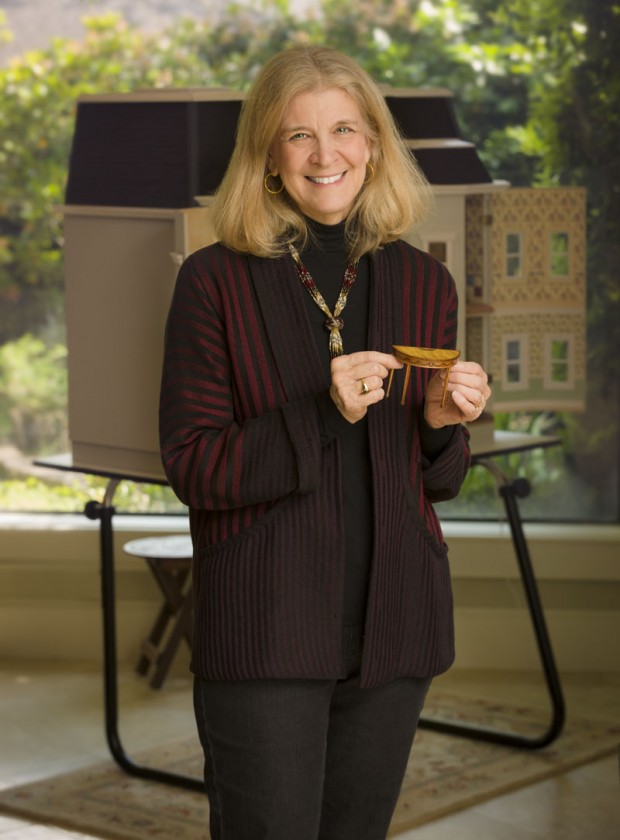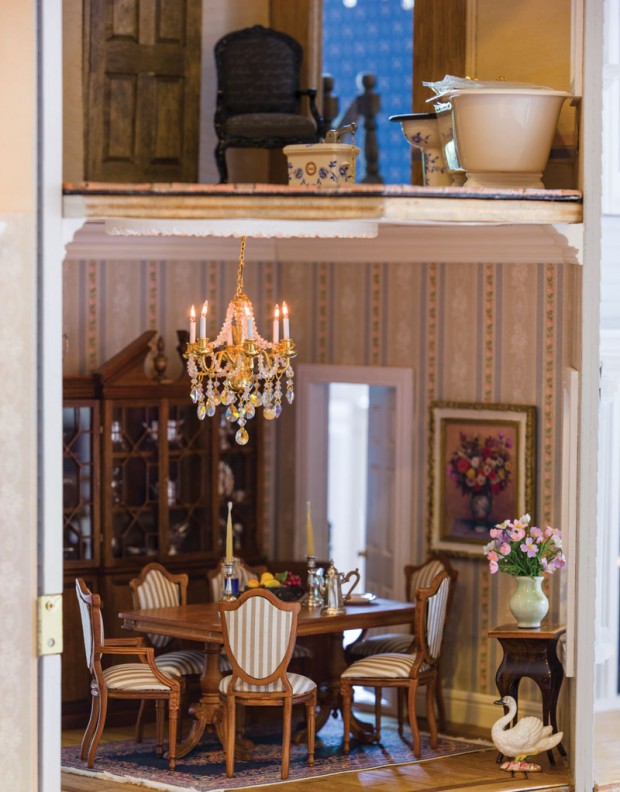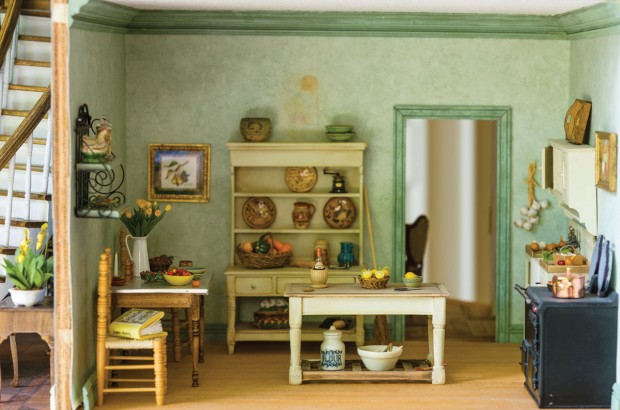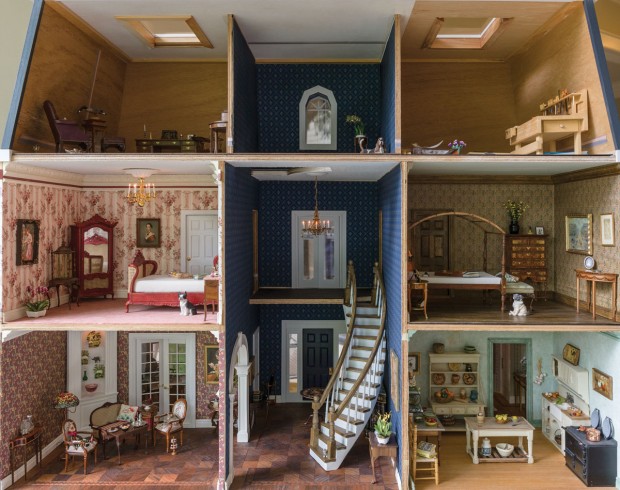Tiny Retreat
A doctor’s respite in miniature

It’s nice to have a retreat, a place to regroup after a long week. Buzz resident Patricia Eifel, a radiation oncologist, finds working on her stately home, Foxhall Manor, good for the soul.
“My job can be intense. Having this house to work on is good therapy,” she says, skimming her hand over buckled wallpaper. “This needs replaced. I’ll make my own wallpaper next time.”
Yep, Patricia is handy. She peruses patterns to make wallpaper and installs her floors and moldings. She even put in the home’s electrical system. “Tricky. My least favorite job.”
But she has never once set foot in the house.
Hands? They’re all over the place.
“It’s all in the details, making it look real,” says the Bellaire miniaturist who works in standard 1:12 scale, meaning an inch in miniature equals one foot in real life.
“I love it when people see a picture I have of one of the rooms and they ask, ‘Is that your house?’ Well, it is my house. But I don’t have to worry about much maintenance or cleaning.”
Indeed, not even the pets in this tiny dwelling need much caring after. “Oops, my canary doesn’t look well,” she says of the bird, half the size of a pinkie, lying on the floor of his cage. “I’ll tend to him later.”
Patricia is a woman of many talents. She’s a passionate photographer, classical pianist, an avid cook. As chief of the Gynecologic Radiation Oncology Service at MD Anderson Cancer Center, she tends to patients, teaches, pens medical papers and writes books on the latest medical techniques in her field. And when the mood strikes, she trolls the Internet for artisan-made collectibles to add to her teeny, tiny house.
“I think you have to be a bit compulsive to do this,” she quips. “First you discover a dollhouse, then all the hundreds of things that go with it. It becomes a challenge. Can I make these rooms look like they’re not in miniature in photographs? My goal is to get better at that.”
Seems her visual acuity in analyzing medical scans comes in handy when working with miniatures. “I’m looking at 3D pictures all the time,” she explains. “I think you have to be one of those people who pays a lot of attention to detail to pull this off.”
Patricia’s call to the small began with childhood visits to the Art Institute of Chicago with her mom. There, in the museum’s basement, is a world of wonder, The Thorne Rooms. This permanent collection of 68 incredibly detailed miniature rooms, depicting styles spanning the centuries, were created between 1934 and 1940 at the urging of Chicago socialite and miniature enthusiast Narcissa Niblack Thorne.
“If you’re a little girl growing up in Chicago, it’s like child abuse if you don’t take your child to see The Thorne Rooms,” says Patricia, laughing. “I went back years later, and the nostalgia of it hit me. I think I’ve always been intrigued by dollhouses and miniatures.”
Years later, she found an excuse to indulge when a granddaughter arrived on the scene after years of grandsons. “Finally!” When the grandchild was old enough to appreciate it, Patricia bought a $150 kit (“basically a box of milled lumber,” she says) and got to work, constructing and furnishing the Victorian-style dollhouse in time for Christmas.
Her granddaughter loved it, and Patricia’s penchant for the petite grew.
Her current project, Foxhall Manor, a more elaborate kit with all the bells and whistles, is canvas for her latest obsession, making miniature furniture.
“I’ve really become entranced by the skilled artisans who make miniature furniture,” she says. “Some of their pieces, well, you’d be gobsmacked. Amazing!”
For the past five years, she’s taken furniture workshops under professional artisans at the Chicago International Miniatures Show. This year, she’s added food to the menu, learning how to make tiny edibles out of polymer clay like the lemons, cheese, cake and duck legs in her tiny manor kitchen.
“I’m particularly pleased with the way this turned out,” she says of a Chippendale Neo-classical marquetry demi-lune side table she made. A miniature reproduction of a Louis XVI transitional commode, circa 1770, is another favorite she handcrafted.
It’s difficult to describe what’s so enticing about miniatures, Patricia says.
But enticed, she is.
“It’s whimsical and entrancing, like listening to Beethoven or gazing at a fabulous painting. The idea that a human being can create something so tiny and it can look so perfect. That kind of creativity? I think we all share a bit of that genetic code.”
Want more buzz like this? Sign up for our Morning Buzz emails.
To leave a comment, please log in or create an account with The Buzz Magazines, Disqus, Facebook, or Twitter. Or you may post as a guest.


